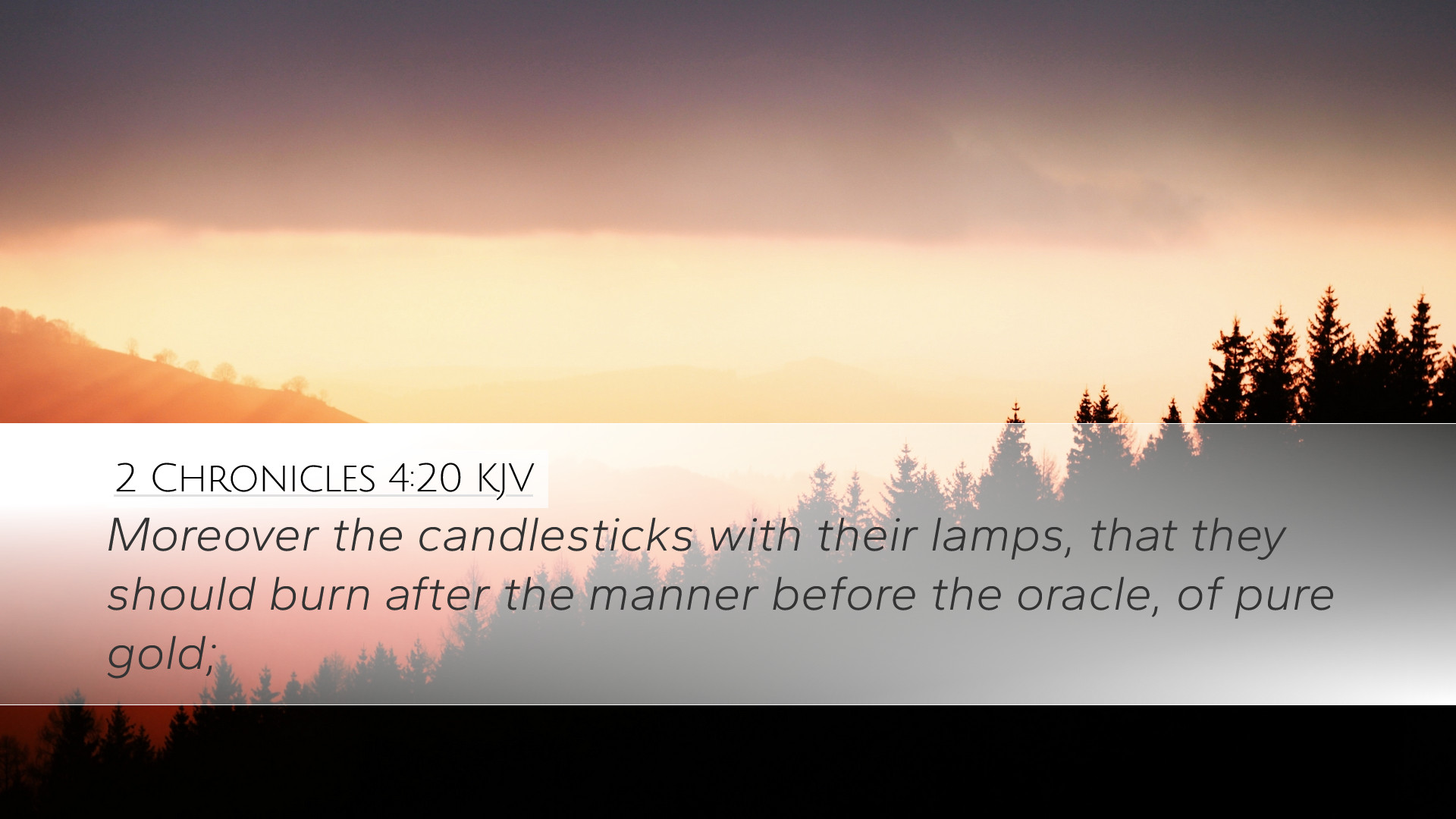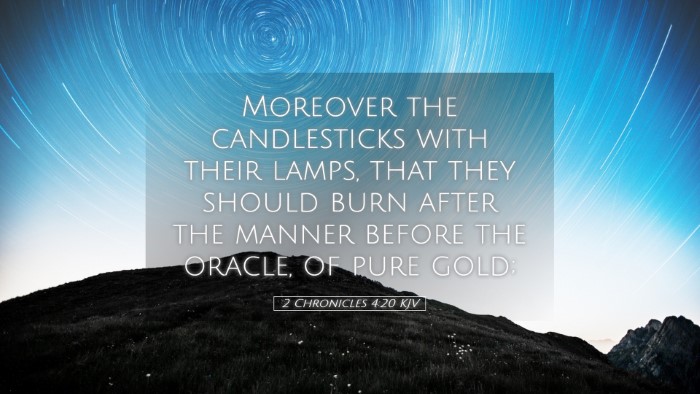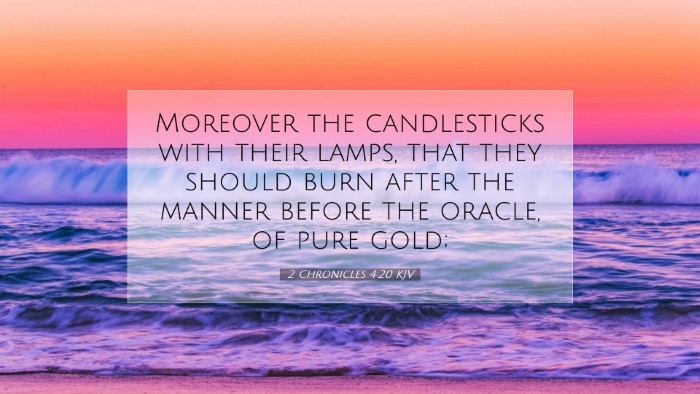2 Chronicles 4:20 - Commentary
"And the candlesticks of gold with their lamps, to burn every evening, before the oracle, for he also made a thing of gold, but in a different shape and also made a thing of brass." (2 Chronicles 4:20)
Introduction
The verse in question, 2 Chronicles 4:20, highlights the intricate details of the furnishings inside Solomon's temple, particularly focusing on the candlesticks that were designed to illuminate the sacred space. This commentary seeks to explore the significance of these elements within the context of the temple's function and the broader theological implications they convey. By examining insights from notable public domain commentators such as Matthew Henry, Albert Barnes, and Adam Clarke, we will draw forth an understanding that is both historical and devotional, addressing the hearts of pastors, students, theologians, and scholars alike.
Historical Context
To appreciate the significance of the candlesticks, one must consider the historical backdrop of 2 Chronicles. King Solomon, after assuming the throne, set out to build a temple for the Lord in Jerusalem, as his father David had planned but was unable to accomplish. This temple symbolized the dwelling place of God among His people and served as the focal point of worship in Israel.
The Candlesticks: Symbols of Light and Divine Presence
The candlesticks of gold represent not merely physical light but also the spiritual illumination provided by God.
-
Matthew Henry's Insight: According to Henry, the candlesticks were meant to burn continually, signifying the perpetual presence of God's holiness and the illuminating power of His word. He reflects on the purpose of worship as one that must be sustained both physically and spiritually.
-
Albert Barnes' Contribution: Barnes emphasizes the importance of the golden candlesticks in relation to the priestly duties. They were to burn every evening before the oracle, symbolizing the faithful worshippers bringing their offerings of praise and devotion before God. He notes how these practices point to God’s desire for a continual relationship with His people.
-
Adam Clarke's Perspective: Clarke adds to the understanding of these lamps’ significance in a liturgical context, interpreting them as representations of divine wisdom and truth. The use of gold indicates purity and the divine nature of God's presence within the temple.
The Structure and Design
The detailed craftsmanship of the candlesticks, made of gold, aligns with the overall theme of the temple's grandeur and holiness.
-
Henry on Craftsmanship: He highlights that the meticulous design of the temple's furnishings—including the candlesticks—demonstrates the reverence owed to God. The use of gold reflects intrinsic value and serves as a metaphor for the beauty and excellence inherent in the worship due to God.
-
Barnes on Functionality: Emphasizing the practical aspect, Barnes notes that the candlesticks not only served a decorative function but also a liturgical one, providing essential illumination that facilitated worship practices, thus enhancing the congregational focus on God.
-
Clarke on Symbolism: Clarke points out that beyond their physical role, the candlesticks symbolize the concept of being ‘lights’ in the world, encouraging believers to reflect God’s light in their lives and communities.
The Spiritual Implications
The candlesticks also carry profound spiritual lessons for contemporary believers.
-
Henry's Theological Insight: He draws parallels between the candlesticks and modern believers who are called to reflect the light of Christ in their lives. Just as the candlesticks illuminated the temple, Christians are called to illuminate a dark world through their actions and witness.
-
Barnes on Continuous Worship: Barnes notes that the continual burning of the lamps before the oracle serves as a reminder of the need for ongoing worship. Worship is not limited to formal gatherings but should be a daily aspect of life, representing devotion and dedication to God.
-
Clarke’s Encouragement for Believers: Clarke encourages believers to maintain a vibrant relationship with God, likening the candlesticks to a believer’s inner light, which can only shine brightly through the filling of the Holy Spirit and a life committed to Godly values.
Concluding Thoughts
The study of 2 Chronicles 4:20 transcends mere historical observation; it invites reflection on the nature of worship, the symbolism of light, and the joyous practice of living a life that continuously seeks to honor God. As pastors, students, and scholars meditate on the significance of the temple's candlesticks, may they be inspired to cultivate their own lives as golden vessels of worship, radiating God's glory in their spheres of influence.
Ultimately, this verse and its associated commentary remind us that God desires for us to be bearers of His light, illuminating the way for others through our commitment to His presence and purpose.


